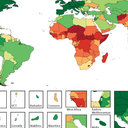Redox stress and hepatic DNA fragmentation induced by diquat in vivo are not accompanied by increased 8-hydroxydeoxyguanosine contents.
Schlüsselwörter
Abstrakt
Administration of 0.1 mmol/kg of diquat to Fischer-344 rats causes acute hepatic necrosis by mechanisms that appear to involve increased generation of reactive oxygen species, but the critical targets of the proposed oxidations have not been identified. In the present study the effects of diquat-induced redox stresses on hepatic protein thiol status were determined by derivatization of subcellular fractions with monobromobimane and separation of the fluorescent derivatives by SDS-PAGE. No differences in hepatic thiol status were seen in animals 2 or 6 h after diquat, relative to saline-treated controls, despite documentation of injury by elevated plasma transaminase activities. Hepatic DNA fragmentation was increased in diquat-treated animals (24.9±5.1 vs 6.7±0.3% (controls) at 2 h; 57.2±4.1 vs 4.6±0.3% (controls) at 6 h, P<0.001). However, 8-hydroxydeoxyguanosine (8-OHdG) contents in hepatic DNA were not increased by diquat (35.3±6.2 μmol 8-OHdG/mol deoxyguanosine (dG)) over saline-treated controls (28.3±2.6). Plasma NH3 concentrations increased in diquat-treated rats from 49 μM in controls to 170 μM 6 h after treatment with diquat. Hepatic activities of glutamine synthetase (GS) were lower in diquat-treated rats (39.7±13.0 mU/mg protein) than in controls (65.8±13.4, P<0.001), but activities of carbamyl phosphate synthetase-I (CPS-I), were not decreased significantly. The oxidation of proteins to forms reactive with 2,4-dinitrophenylhydrazine (DNPH) was investigated in subcellular fractions by Western blot analyses with a monoclonal antibody to DNP-derivatized bovine serum albumin (BSA). N-terminal sequencing of bands exhibiting reactivity with anti-DNP-BSA antibodies indicated protein carbonyl formation in malate dehydrogenase, protein disulfide isomerase, and glutathione transferase. The functional consequences of oxidation of these proteins are not known but the observation of protein carbonyl formation and no measurable loss of protein thiol content are consistent with iron chelate-mediated oxidation in the transformation critical to expression of tissue damage. The time course data are consistent with DNA fragmentation as a mechanism contributing to the development of cell injury, but the absence of increases in 8-OHdG indicates that direct oxidation of DNA may not be responsible.


